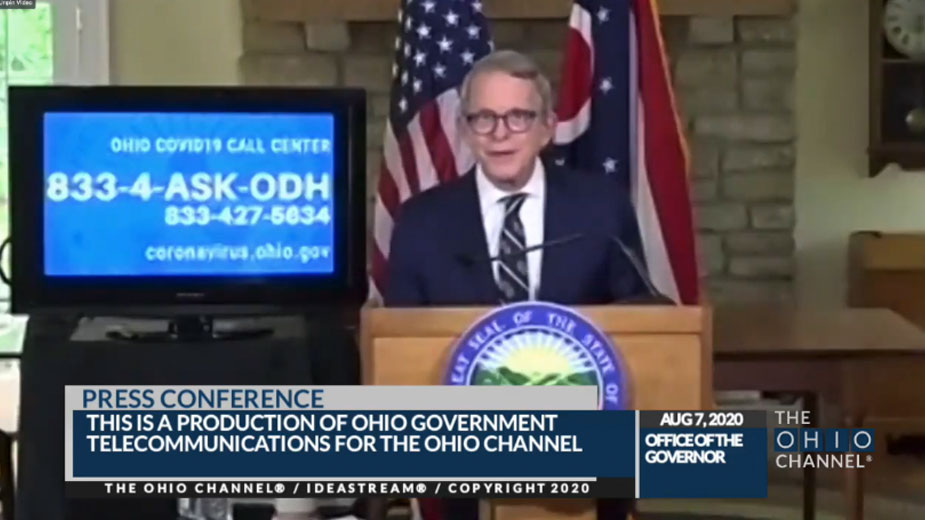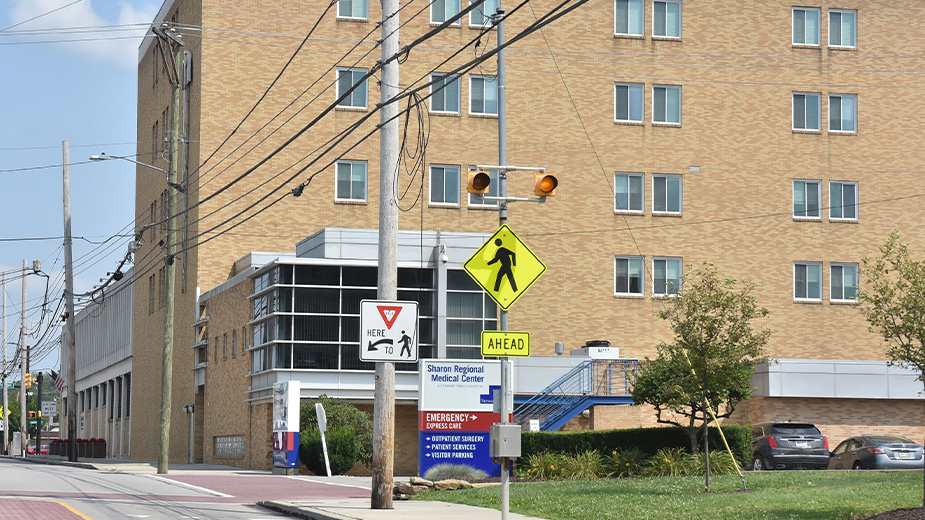DeWine Wants More Funding for Public Health After COVID
YOUNGSTOWN, Ohio — An inability to get detailed information related to outbreaks has Gov. Mike DeWine evaluating the state’s commitment to funding public health.
Contact tracing in Ohio is conducted by 113 health departments, as well as a number of extra tracers the state hired who could go into counties where cases are spiking for COVID-19, the disease spread by the coronavirus.
Under the current system at the Ohio Department of Health, however, data related to outbreaks “is not very easy to get,” DeWine said. Primarily because the Ohio Disease Reporting System and Ohio Contact Tracing System are both outdated. One of which is 19 years old and neither are designed to data mine.
“This is an example of, frankly, the decades of underfunding of public health,” he said.
As the state looks to the future, DeWine says he is committed to investing more in public health, which is something he said needs to happen at the local, state and federal levels.
“We have ignored as a people – Democrats, Republicans – we have ignored public health,” he said. “This ought to be a real wake-up call for us. We’ve got to understand the role of public health.”
Regarding his own health scare, the governor said Thursday was “kind of a roller coaster day.” DeWine conducted Friday’s briefing from his Cedarville home.
After testing positive for COVID-19 on his way to Cleveland to greet President Donald Trump Thursday, Dewine was tested again in Columbus. The second test came back negative after being run twice.
Dr. Peter Mohler, chief scientific officer for The Ohio State University Wexner Medical Center and vice dean for research, Ohio State College of Medicine, explained the difference in results via video conference.
The initial test was an antigen test, which looks at the proteins at the surface level of the virus, Mohler said. The test allows for results within 15 to 20 minutes, which can allow for faster contract tracing and the ability to quickly quarantine infected individuals.
However, because they aren’t as sensitive of a test, antigen tests are more likely to produce false positives and negatives compared to other tests.
The second test conducted yesterday was a polymerase chain reaction, or PCR test, which “actually looks at the genetic makeup of the virus – looks at the RNA – and amplifies it,” Mohler said.
Reading the test requires individuals with a certain type of training, which makes it difficult to scale this type of test, he said. However, the test is capable of detecting very low viral loads in people who are symptomatic or asymptomatic.
“You get a very good impression of what’s happening at that level,” he said.
Ohio has conducted more than 1.6 million PCR tests, accounting for “well over 90% of the people that have been tested” in the state, he noted.
While PCR is the “gold standard,” Mohler said the state is looking at all manner of tests as it builds its testing infrastructure.
During his briefing Aug. 4, Gov. DeWine reported the state’s testing efforts have averaged 22,000 tests daily, which is more than double from six weeks prior.
In an effort to expand Ohio’s testing capabilities, DeWine announced that day a multi-state purchasing agreement with Maryland, Louisiana, Massachusetts, Michigan and Virginia to increase the use of rapid point-of-care tests because of their faster turnaround time.
But before certain tests are rolled out, health experts need to be more aware of the pros and cons of each variety. Ohio has more experience with PCR tests than the antibody tests, Mohler said.
“When we deploy antigen tests, we’ve got to think long and hard about how exactly we’re going to deploy it,” DeWine added. “Going through that experience yesterday pushed my head down right in it and said hey, let’s look at the reliability of this test.”
The state is also starting a pilot process of so-called “pool testing,” which allows testing centers to put as many as five, 10 to 15 samples together in one testing run, Mohler said. This would help alleviate issues of supply chain and turnaround time, he said, saving about 80% of the state’s testing capacity.
“This would allow us to save reagents, to speed up our turnaround time, and really change the way we test as a state and really redefine our testing strategy,” Mohler said.
Announcements About Sports Coming Next Week
During next week’s coronavirus briefings, Gov. DeWine said residents can expect announcements regarding professional, college and high school sports, the latter of which has been a concern among school administrators and parents.
“When we talk about our students, when we talk about our student athletes, I truly believe that the schools are doing absolutely everything they can to protect our students,” he said.
As he talks to superintendents, one of the concerns is what students do when they’re not at school, DeWine said. The governor views this as an opportunity for principals, teachers, coaches and parents to talk to the students about when they leave the school and how careful they need to be.
Applications for $50M School Grant Program Start Aug. 10
Starting Aug. 10, schools can apply for the $50 million grant program to support efforts to help students gain reliable access to the internet, said Lt. Gov. Jon Husted.
Grant monies must be used to purchase internet hot spots, cellular enabled devices, and public and mobile public Wi-Fi, Husted said. Grants can also be used to cover purchases made since July 1.
“So if they’ve already made these purchases, you’re not going to be punished for being proactive,” Husted said. “You’re still eligible to have some of those costs recouped.”
Husted doesn’t expect the $50 million will be enough to help everyone who needs it, so distribution will prioritize schools who need it the most, he said.
The application period runs Aug. 10 to Aug. 21. Schools will be notified the week of Aug. 31. CLICK HERE for more information and to find the application at the end of the day Friday.
To help schools stretch their grant dollars as far as possible, Ohio will publish pricing information from 12 companies that offer applicable products and services, Husted said. Information will be posted at Procure.ohio.gov.
“When we get into the winter, we’re expecting that this virus might get tougher than it is now,” Husted said. “So we know that preparing these students and schools for the future of potentially having to do distance learning is important. And these monies have been set aside, and these prices are now being published publicly so we can get the best deals possible.”
Pictured: Gov. Mike DeWine conducted his coronavirus briefing from his Cedarville home on Friday.
Copyright 2024 The Business Journal, Youngstown, Ohio.



